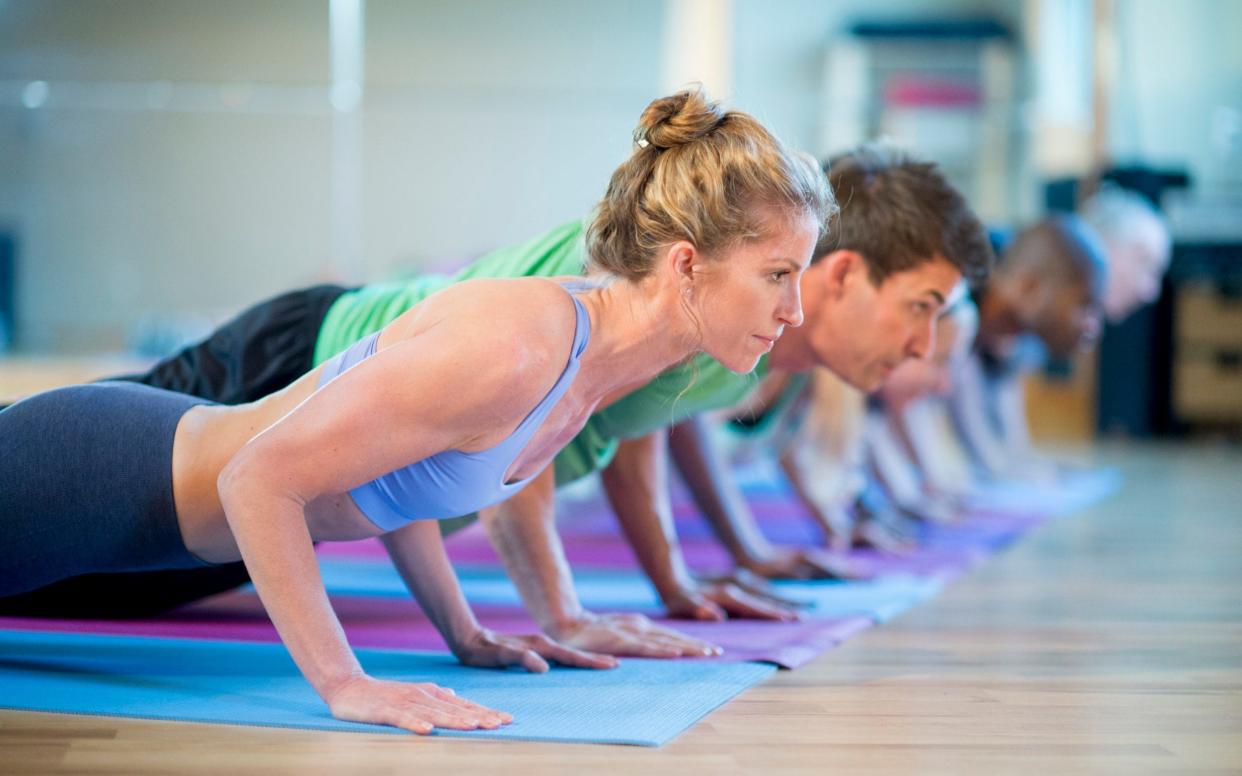Yoga more dangerous than previously thought, scientists say

Yoga is more dangerous than previously thought and causes as many injuries as other sports, a study has found.
The 5,000 year-old Indian discipline is said to boost physical and mental wellbeing, and celebrity fans include Beyonce, Lady Gaga and Brazilian supermodel Gisele Bundchen - as well as David and Victoria Beckham.
However, in a recent study yoga caused musculoskeletal pain - mostly in the arms - in more than one in ten participants.

The scientists behind the research, which was published in the Journal of Bodywork and Movement Therapies, also found that the practice worsened over a fifth of existing injuries.
Professor Evangelos Pappas, of Sydney University, the study's lead researcher said: "Yoga may be a bit more dangerous than previously thought.
"Our study found the incidence of pain caused by yoga is more than 10 percent per year - which is comparable to the rate of all sports injuries combined among the physically active population.
"However people consider it to be a very safe activity. This injury rate is up to 10 times higher than has previously been reported."

His team assessed more than 350 people who attended yoga classes at two studios in New York.
Yoga is an increasingly popular complementary or alternative therapy for musculoskeletal disorders, with millions of people practising worldwide.
Prof Pappas said: "While yoga can be beneficial for musculoskeletal pain, like any form of exercise, it can also result in musculoskeletal pain."
He added: "We also found yoga can exacerbate existing pain, with 21 per cent of existing injuries made worse by doing yoga, particularly pre-existing musculoskeletal pain in the upper limbs.

"In terms of severity, more than one-third of cases of pain caused by yoga were serious enough to prevent yoga participation and lasted more than 3 months.
"The study found that most 'new' yoga pain was in the upper extremities - shoulder, elbow, wrist, hand - possibly due to downward dog and similar postures that put weight on the upper limbs."
The study conducted with Prof Marc Campo from Mercy College, New York, asked participants to complete an electronic questionnaire at the start of the project and again one year later.
Outcomes included incidence and impact of pain caused by yoga and prevalence of pain caused, exacerbated, unaffected, and improved by the ancient practice.

Prof Pappas said: "It's not all bad news, however, as 74 per cent of participants in the study reported that existing pain was improved by yoga, highlighting the complex relationship between musculoskeletal pain andyoga practice.
"These findings can be useful for clinicians and individuals to compare the risks of yoga to other exercise enabling them to make informed decisions about which types of activity are best.
"Pain caused by yoga might be prevented by careful performance and participants telling their yoga teachers of injuries they may have prior to participation, as well as informing their healthcare professionals about their yoga practice.

"We recommend that yoga teachers also discuss with their students the risks for injury if not practised conscientiously, and the potential for yoga to exacerbate some injuries.
"Yoga participants are encouraged to discuss the risks of injury and any pre-existing pain, especially in the upper limbs, with yoga teachers and physiotherapists to explore posture modifications that may results in safer practice."
The main components of yoga are postures, a series of movements designed to increase strength, flexibility and breathing.
It's now commonplace in leisure centres, health clubs, schools, hospitals and surgeries.
There's some evidence that regular yoga practice is beneficial for people with high blood pressure, heart disease, aches and pains - including lower back pain - depression and stress.
The NHS says most forms of yoga are not strenuous enough to count towards your 150 minutes of moderate activity, as set out by government guidelines.
However, yoga does count as a strengthening exercise, and at least two sessions a week will help you meet the guidelines on muscle-strengthening activities.
Activities such as yoga and tai chi are also recommended to older adults at risk of falls to help improve balance and co-ordination.

 Yahoo News
Yahoo News 
